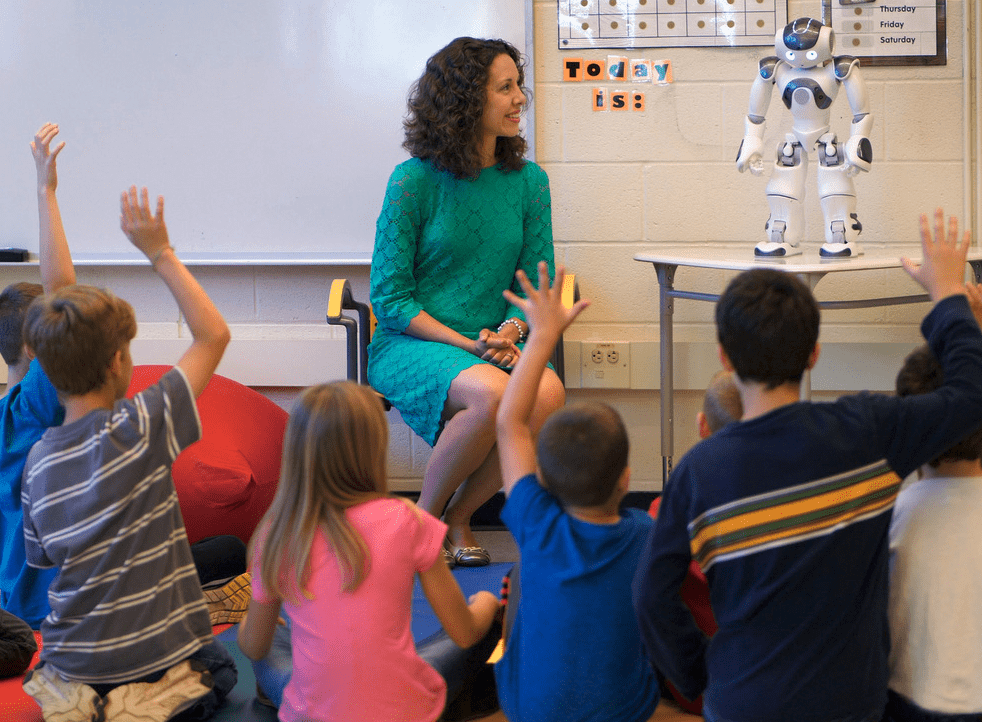Back-To-School anxiety is a normal and very common experience among children of all ages and levels of development. Schools can be busy, loud, and overwhelming. The start of a new school year brings about a new set of guidelines, rules, and expectations. Teachers and classrooms are unfamiliar, routines and schedules are different, friends may have changed, and Covid-19 regulations may be more demanding. For students on the autism spectrum and those who have spent the majority of the last year outside of the classroom as a result of the pandemic, returning to in-person learning this year may be particularly intimidating and unsettling.
When children are anxious they may not know how to express their feelings in words. This is particularly true for children on the spectrum who are nonverbal. As a result, parents may see challenging or negative behaviors from their child. This might include an increase in meltdowns or aggressive behaviors, difficulty sleeping, changes in eating habits, physical ailments like complaints of stomach ache or headache, increase in stimming (rocking, flapping, pacing) or ritualizing, the child desiring to spend more time alone, and/or relying and focusing more heavily on routines. School anxiety affects not only a child’s physical and mental well-being but also his/her ability to learn and thrive in the classroom.
It can be very difficult for any parent to watch their child struggle with anxiety of any kind, but there are ways to prepare and help them cope with all of the changes involved in the back-to-school transition…
It is important to manage your own fears and anxieties when approaching a new school year. Children often pick up on their parents’ and caregivers’ feelings and attitudes no matter how subtle. Be sure to highlight the fun and exciting things that a new school year brings rather than focusing on all of the changes and challenges. If you have a positive and encouraging outlook on the school year ahead, your child is much more likely to adopt the same.
Listen empathetically and validate your child’s feelings. Whether your child is telling you they are scared and worried about school, or whether they are communicating through negative behavior choices, let them know their concerns are normal and you understand why they are feeling this way. Sometimes all it takes to calm their worries is validation and allowing children to express themselves.
Give ample notice for the changes that are coming and involve your child in the process. It is important to inform your child when school will be starting and make them aware of the modifications that will be made so that they know what to expect. Take your child back-to-school shopping and allow them to select their own school supplies. This helps give your child some control over the changes that are coming and can be an important step in alleviating some of their worries.
Establish new and predictable daily routines. Provide a calendar and schedule for your child so they can visualize the changes that will be coming. This calendar or schedule can include pictures of the school, the child’s bus driver, teachers, and therapists, as well as pictures of other steps in the daily routine. Laying out the day like a storyboard may help ease the challenge of transitioning from one step to the next.
Review some of the basic school rules and expectations with your child. When possible, show or tell them where their classroom is, where their book bag will go, what time lunch will be, and where the bathroom is located. Teach or review any school rules or norms. Allow your child to ask questions and answer them simply and honestly. Knowing the answers to some of these questions will likely help your child feel more comfortable in their new classroom. If possible, request a virtual meeting with your child’s teacher to get them acquainted before the first day and discuss any questions or concerns you may have.
Practice or do a walk-through of what the new school routine will look like. Have a mock school day! Set an alarm clock for wake-up time. Guide them through a morning routine of getting dressed, eating breakfast, brushing their teeth and preparing their materials for the day. Whether your child will walk, take a bus, or be driven to school, help them become familiar with the route. Even if your child is already familiar with the route to school, completing a practice run will help remind them what the school looks like and how they will get there. This can help ease back-to-school transportation worries. When the first day of school arrives, your child can feel more comfortable knowing the routine!
Enlist the help of professionals if your child is not adapting well to the changes. You know your child better than anyone! If you get the sense that their back-to-school anxiety is not subsiding and they are not settling into the new routine and as the year progresses, you can talk to your child’s teachers, doctor(s), therapist(s), and/or counselor(s).
It is important to remember that back-to-school time can be chaotic and stressful for everyone, including the teachers and parents, but with a little attention and preparation, you can get ahead of the worry. Establishing a routine that will work best for your child, family and school can make the transition more successful. Take each day as it comes and know that back-to-school stress and anxiety are usually temporary.

